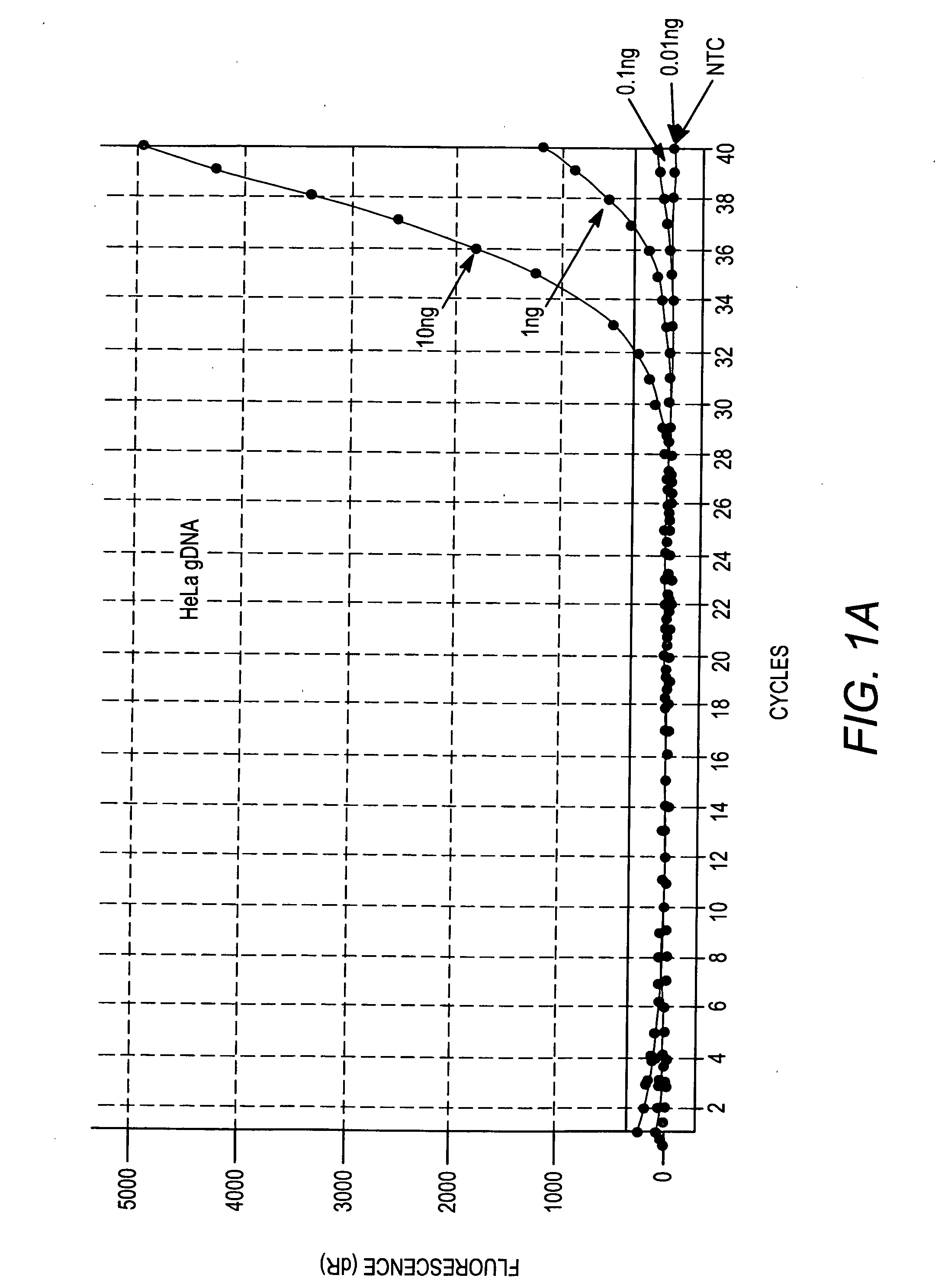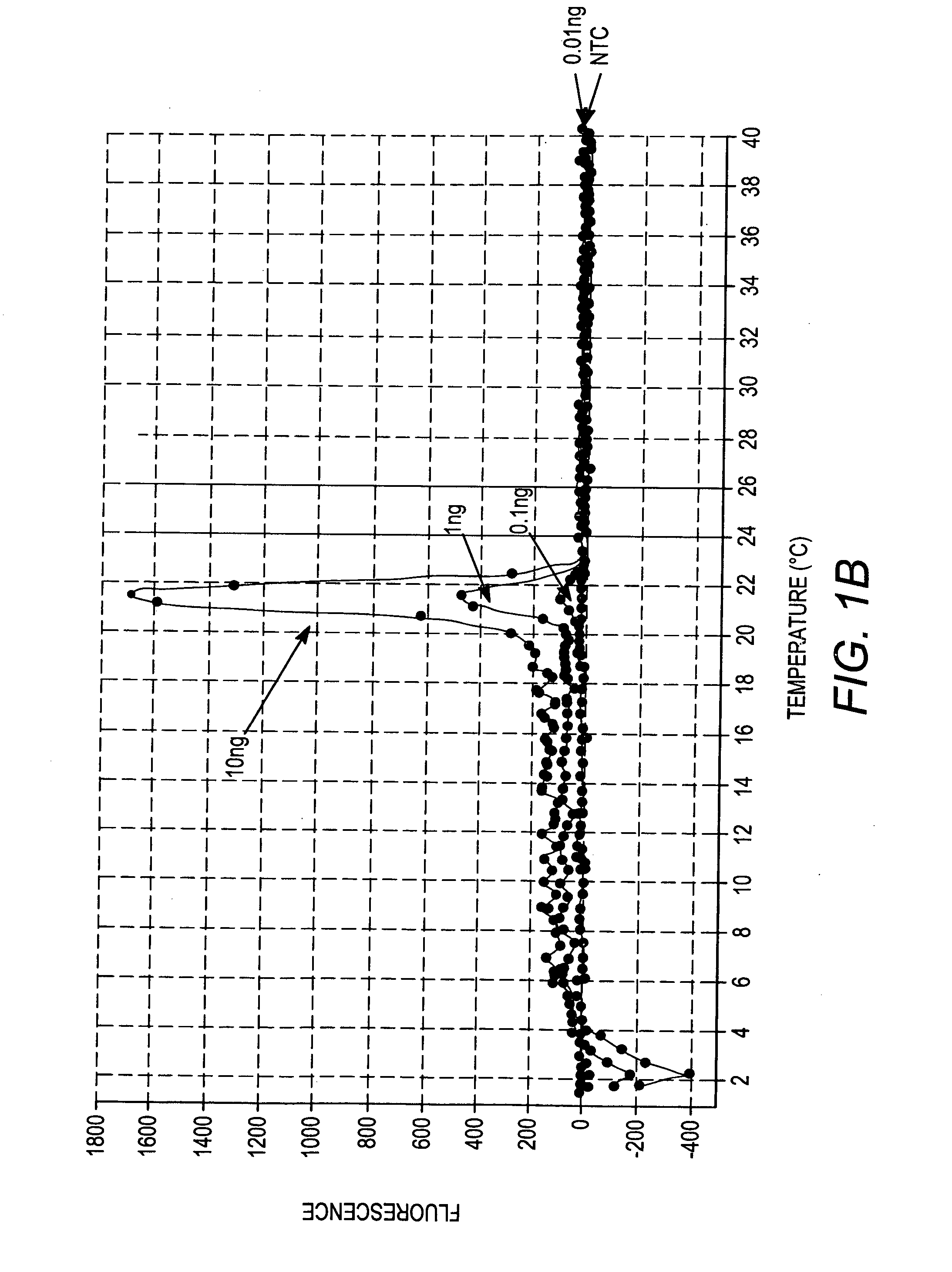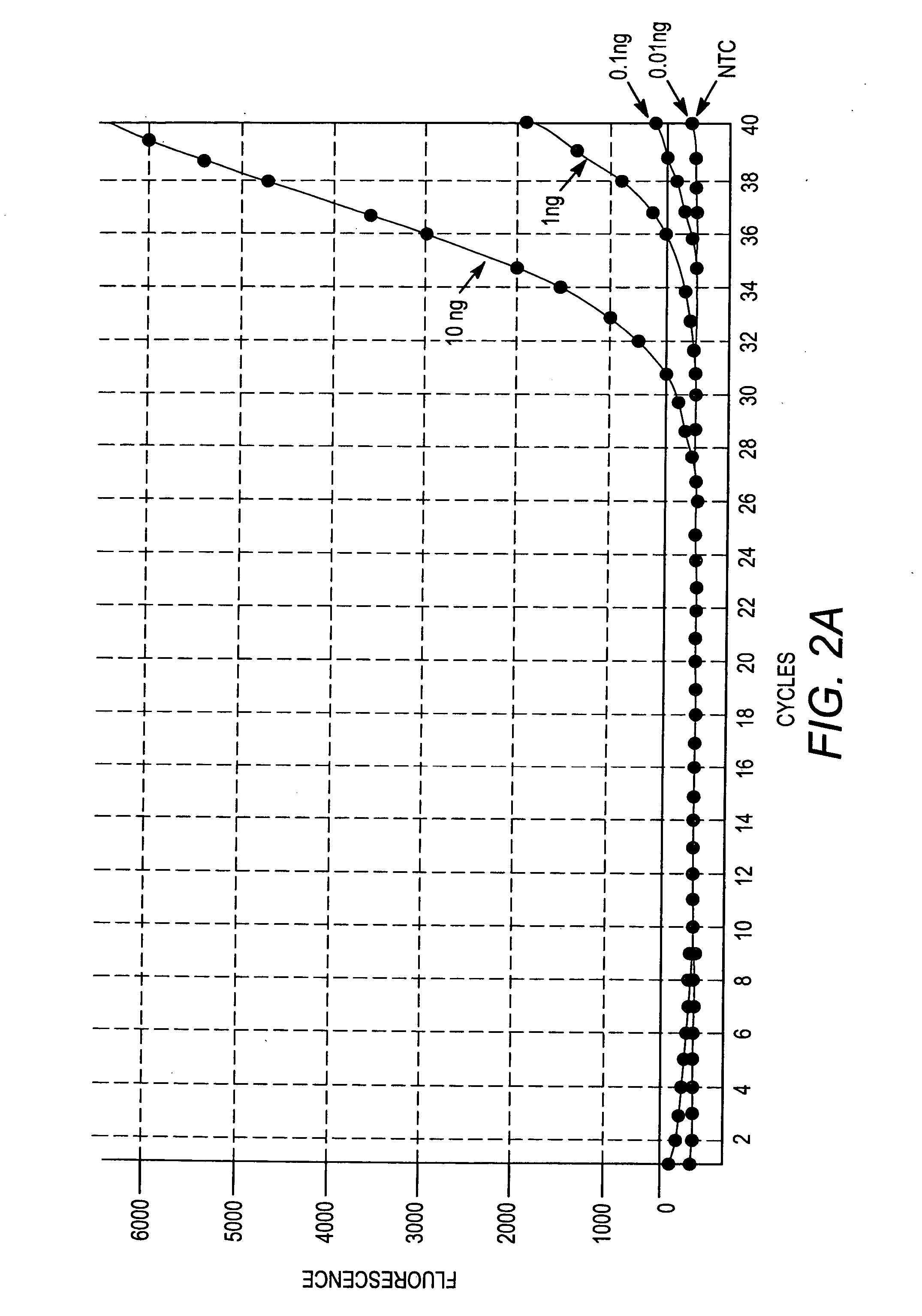Normalization of samples for amplification reactions
a technology of amplification reaction and sample, applied in the field of molecular biology, can solve problems such as inaccurate benchmarks
- Summary
- Abstract
- Description
- Claims
- Application Information
AI Technical Summary
Benefits of technology
Problems solved by technology
Method used
Image
Examples
example 1
Identification of Unique Human Genomic Sequences
[0128] To provide internal controls for amplification of target nucleic acids, and for normalization of materials to be amplified across samples, unique sequences within the human genome were identified, and primer sets designed to amplify those unique sequences.
[0129] Human genome, UCSC Build hg17, was used as a source of human unique genomic sequences. Fifteen 600-nucleotide repeat-free fragments were selected on each chromosome, except chromosomes X and Y. Each of the 315 selected fragments were aligned to the entire human genome using blastn (Altschul et al., 1990). The alignment analysis revealed 237 sequences that matched single genomic regions with e-values of 1e-10 or lower. These 237 sequences were used for primer and probe design for amplification of unique human genomic sequences.
[0130] 60° C. and 70° C. temperatures were requested as primer and probe melting temperatures, respectively. Additionally, the probe design had ...
example 2
Generation of Amplification Plots, Dissociation Curves, and a Standard Curve for a Human Cell Line
[0132] Amplification profiles of unique genomic sequences in the genome of the human HeLa cell line were generated using primer pairs disclosed in Table 1, above. In addition, a standard curve plotting the amplification profile of the unique human genomic sequence detected by primer set 10 (SEQ ID NO:19 and SEQ ID NO:20) versus amount of genomic DNA present in the sample was created. The QPCR reactions were performed and monitored using an MX3000P thermocycler from Stratagene, Brilliant® SYBR® Green QPCR Master Mix (Stratagene Cat. No. 600548) and HeLa genomic DNA (10 ng, 1 ng, 0.1 ng, and 0.01 ng per amplification reaction), according to the instructions provided with the Brilliant® SYBR® Green QPCR Master Mix. Briefly, the amplification reactions comprised the following components and amounts (total volume of 25 ul): 5 ul of gDNA; 12.5 ul of 2×Master Mix; 0.125 ul of each primer (15 ...
example 3
Evaluation of Primer Performance With Different gDNA Samples
[0138] The ten primer sets from Table 1 were used to determine whether the primer sets were suitable for amplification of unique gDNA sequences from different human cell types. To do so, eight human cell types (A2058, SW872, HepG2, U937, RPMI8226, NTERA, human gDNA from Clontech, and human gDNA from Promega) were selected and the ten primer sets were used in ten separate amplification reactions. Ten corresponding dissociation curves were generated from the ten amplification reactions. Amplification reactions were performed, and dissociation curves were obtained, using the reagents, procedures, and equipment outlined above, with the exception that, for each amplification reaction, 1 ng of gDNA was provided. The amplification plots and dissociation curves are depicted in FIGS. 7A through 16B.
[0139] More specifically, FIG. 7A depicts the amplification profiles for the eight cell types using primer set #1 (SEQ ID NO:1 and SEQ...
PUM
| Property | Measurement | Unit |
|---|---|---|
| total volume | aaaaa | aaaaa |
| total volume | aaaaa | aaaaa |
| temperature | aaaaa | aaaaa |
Abstract
Description
Claims
Application Information
 Login to View More
Login to View More - R&D
- Intellectual Property
- Life Sciences
- Materials
- Tech Scout
- Unparalleled Data Quality
- Higher Quality Content
- 60% Fewer Hallucinations
Browse by: Latest US Patents, China's latest patents, Technical Efficacy Thesaurus, Application Domain, Technology Topic, Popular Technical Reports.
© 2025 PatSnap. All rights reserved.Legal|Privacy policy|Modern Slavery Act Transparency Statement|Sitemap|About US| Contact US: help@patsnap.com



